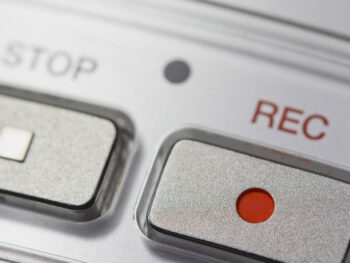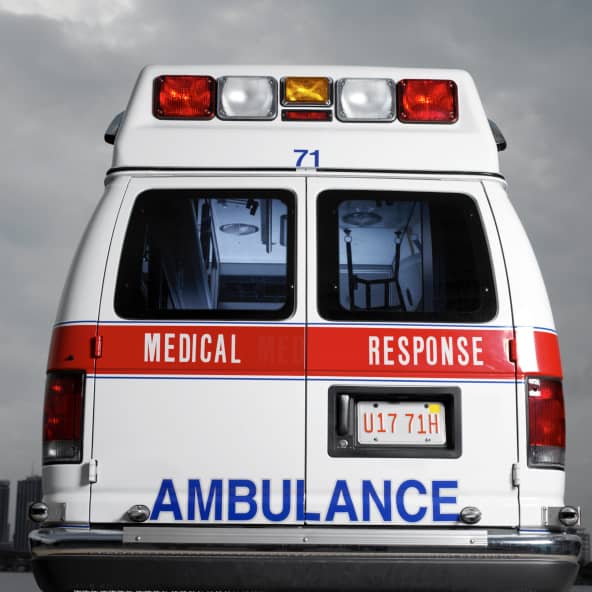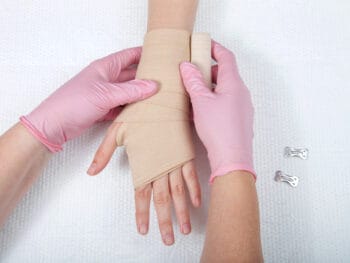The key to managing your workers’ compensation costs are documentation and following procedures. It is crucial that all employees and supervisors are trained on how to handle an on-the-job injury as part of your on-going safety program.
Click Link to Access Free PDF Download
“13 Research Studies to Prove Value of Return-to-Work Program & Gain Stakeholder Buy-In”
Demonstrate to employees how to obtain emergencyand non-emergency medical care for injured employees. Describe what forms and documents to give to (and get from) an injured employee. Train employees in post-injury response roles and responsibilities.Display the post-injury procedure where employees can easily read it. That might be on a wallet card, a lanyard, in the glove box or on the visor of a company vehicle. Give each employee a brochure about what to do if they are injured on the job.
Include all necessary documentation in a packet so supervisors have all necessary documentation readily available in the event an employee is injured.
The following are important steps for managing an on-the-job injury:
- The supervisor makes a decision about obtaining medical care, such as on-the-spot first aid, when a subordinate is injured on the job. The supervisor should never discourage an employee from seeking medical attention.
- If you have a company nurse or have them coordinate immediate medical care so the injured employee receives prompt, excellent quality care by a physician or clinic which supports your company’s goal of rapid healing and return to productivity.
- Select the most qualified physicians and clinics to gain maximum control of the medical care your employees receive.
- Provide transportation to the medical facility if it is offsite.
- Follow your location’s procedures for notifying emergency services such as an ambulance or EMTs.
- Remain with the employee until medical professionals arrive and you are satisfied that the employee is receiving adequate care.
- The supervisor should accompany the employee to the emergency care provider if at all possible.
- Obtain the name of the contact person at the medical facility to contact about the employee’s condition over the next few hours/days.
- Have the medical provider perform a post-injury drug and alcohol screen after all injuries. If the employee has gone to the emergency room or a non-network doctor for initial treatment and has not received a drug screen, have the employee go to your clinic the next day for a drug screen.
- In some companies, the president or owner will go to the hospital to check on the employee’s condition.
- If they have left any personal items at work, offer to bring them these items.
- Obtain the name and address of the medical facility treating the employee.
- Contact a seriously injured employee’s family or emergency contacts.
- The supervisor must have ready and give the employee a copy of your company’s Injury Instructions and Workers’ Compensation Brochure.
- The supervisor also sends the Work Ability Form directly to the medical provider with instructions to complete and return to the supervisor within 24 hours of treatment. If the supervisor has a problem retrieving the completed WAF from the medical provider within 24 hours, refer the issue to the injury coordinator for action.
- If the employee goes to the emergency room, do not forget to request the medical records from the emergency room visit – this is often overlooked. Make sure to send the HIPAA release with the record request.
- The supervisor faxes the report package (Work Ability Form and Employee Report; Supervisor Report and Witness Report) to the injury coordinator.
- Document the incident in writing. Obtain information about the incident, the injury, and medical attention sought.
- Complete a Supervisor Report of Incident and Post-Injury Interview with Employee once the employee’s medical condition is stable.
- Have all witnesses and any persons who were nearby complete a Witness Report Form.
- Sign off on the following documents and forward to the worker’s compensation manager: Post Injury Interview with Employee, Employee Report of Incident and Witness Report Form.
- Provide the information to the injury coordinator to report the claim.
- Follow all protocol for identifying and correcting hazards such as removing or repairing malfunctioning objects or equipment.
- Notify injury coordinator upon completion of all steps.
- Call the employee if he or she is unable to return to work after the initial medical treatment. Use our First Day Phone Call Guidelines to make sure you cover all necessary items and do not stray into impermissible areas.
Author Rebecca Shafer, JD, President of Amaxx Risk Solutions, Inc. is a national expert in the field of workers compensation. She is a writer, speaker, and publisher. Her expertise is working with employers to reduce workers compensation costs, and her clients include airlines, healthcare, printing/publishing, pharmaceuticals, retail, hospitality, and manufacturing. She is the author of the #1 selling book on cost containment, Workers Compensation Management Program: Reduce Costs 20% to 50%. Contact:RShafer@ReduceYourWorkersComp.com.
Editor Michael B. Stack, CPA, Director of Operations, Amaxx Risk Solutions, Inc. is an expert in employer communication systems and part of the Amaxx team helping companies reduce their workers compensation costs by 20% to 50%. He is a writer, speaker, and website publisher. www.reduceyourworkerscomp.com. Contact: mstack@reduceyourworkerscomp.com.
©2013 Amaxx Risk Solutions, Inc. All rights reserved under International Copyright Law.














